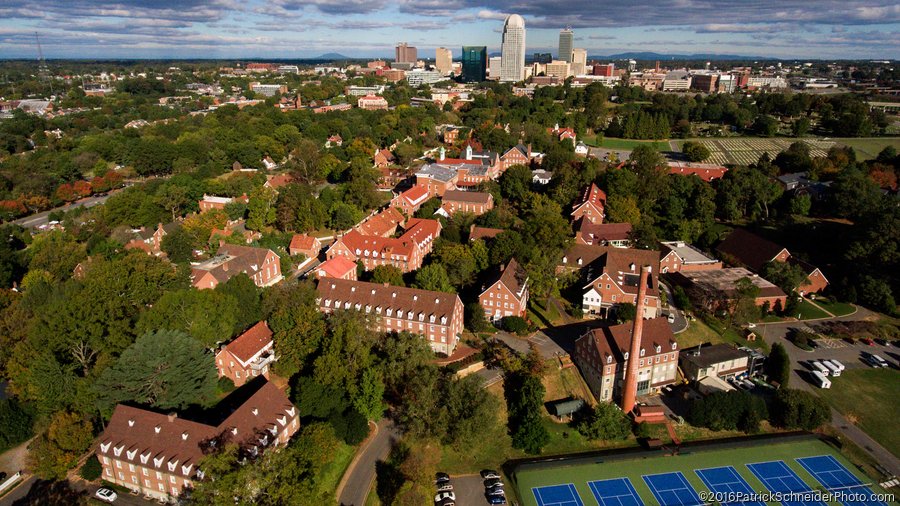With all of the challenges and obstacles that have been thrown at campuses in the past two years, it’s no wonder that college president turnover has been on the rise.
Crisis management has become the name of the game for college and university leaders, and higher-ed experts don’t expect that to change in the New Year. The Covid-19 pandemic continues to keep college leaders on their toes as the Omicron variant surges across the country and students continue to report increasing mental health challenges — just two of the ongoing challenges for university presidents.
The Business Journals spoke with higher-ed watchers and insiders to understand what we should be keeping an eye on in 2022. Here are the takeaways:
Inflation: One trend that industry watchers will be keeping an eye on in early 2022 is the impact of inflation on college campuses. The high-inflation period of the 1970s and early 1980s hit the higher-ed sector hard, said Richard Garrett, chief research officer at Eduventures, an Austin, Texas-based provider of data and advisory services for the higher-ed sector.
“It depressed enrollment, despite demographics being pretty good at the time, and it meant that despite significant tuition hikes, net revenue per student was actually down over time,” Garrett said. “There was this unfortunate combination of higher ed becoming ever more expensive, but not actually having actually having less buying power than it did at the start of the 1970s.”
Given the “fragile enrollment environment” that colleges and universities are experiencing at the moment, Garrett said that it may be difficult for campuses to raise tuition to offset the impacts of inflation.
“Already, the cost of running a college is running ahead of the rate of increase,” Garrett said. “It's hard to know exactly what will happen but based on that 1970s precedent, it could be a. pretty tricky situation at a time when schools are not in the best shape.”
Omicron variant: The Omicron variant quickly jumped to the top of the list of challenges that campuses will surely face in 2022. Already, several campuses have said that January operations will move to remote formats amid rising case counts of the highly contagious Covid-19 variant.
All signs to more colleges following suit and pausing in-person learning in January in the hopes that they can begin more robust campus operations later in the month, depending on the state of the virus. The current public health conditions puts schools — especially campuses that have been struggling financially — in a difficult position, higher-ed experts said. Recent research has shown that since the pandemic started, campuses have been swayed by financial realities when it came time to make difficult decisions regarding virus-mitigation efforts. That means that while wealthy institutions have the luxury of moving to remote learning, most small, tuition-depending colleges have more on the line financially.
"With case numbers starting to spike and even more political polarization around how to respond, colleges are going to be in a really tough spot," said Robert Kelchen, professor and department head of educational leadership and policy studies at the University of Tennessee, Knoxville.
Industry consolidation: Dozens of regional, tuition-dependent colleges managed to keep their doors open throughout the pandemic so far, but without more federal relief to offset their losses, higher-ed experts wonder if we’ll see more closures and mergers in 2022 especially as the Omicron variant spreads.
“There will continue to be at least some (closures and mergers),” Kelchen said. “The pandemic may affect some of that if colleges are forced to spend more on virus mitigation, or students don't want to come in person. I'm not expecting a large wave of closures, but it will continue to seesaw.”
There’s no doubt that the pandemic exacerbated campuses’ financial challenges by adding virus and technology mitigation expenses, on top of falling enrollment. So far, college enrollment shows no signs of recovery. The most recent numbers available from the National Student Clearinghouse Research Center show that undergraduate enrollment declined an additional 3.2% since fall 2020. Enrollment of undergraduate students has now fallen 6.5% from fall 2019. For small schools that depend on tuition to fund operations, even small dips in enrollment can result in cuts.
Still, fewer campuses have closed since March 2020 than experts anticipated at the onset of the pandemic. About 15 colleges have shuttered in the past 20 months, most of which cited financial challenges related to the Covid-19 pandemic, according to Higher Ed Dive, which has been tracking industry consolidation. The latest school to share plans to close is Ohio Valley University in West Virginia, which informed the West Virginia Higher Education Policy Commission last month that it would close and not offer classes during the spring semester, citing an “extremely difficult financial situation.”
“We do not make this decision lightly and realize the work ahead to meet the needs of our students is priority,” Ohio Valley University President Michael Ross wrote in the letter.
Mental health: Nearly every college and university president we speak with brings up mental health as a top challenge and priority for their respective campuses. Research shows that the Covid-19 pandemic has only increased rates of depression and anxiety among students, and college campuses are left reevaluating how they can best help their students. Improving mental health services and resources is an expensive undertaking for campuses, so some higher-ed experts predict we’ll see more schools using third-party vendors and online resources to help students. Other schools with larger endowments and student populations, including Marquette University, are incorporating mental health into campus infrastructure by adding “wellness centers” to try to make help more accessible and reduce the stigma surrounding emotional well-being.





